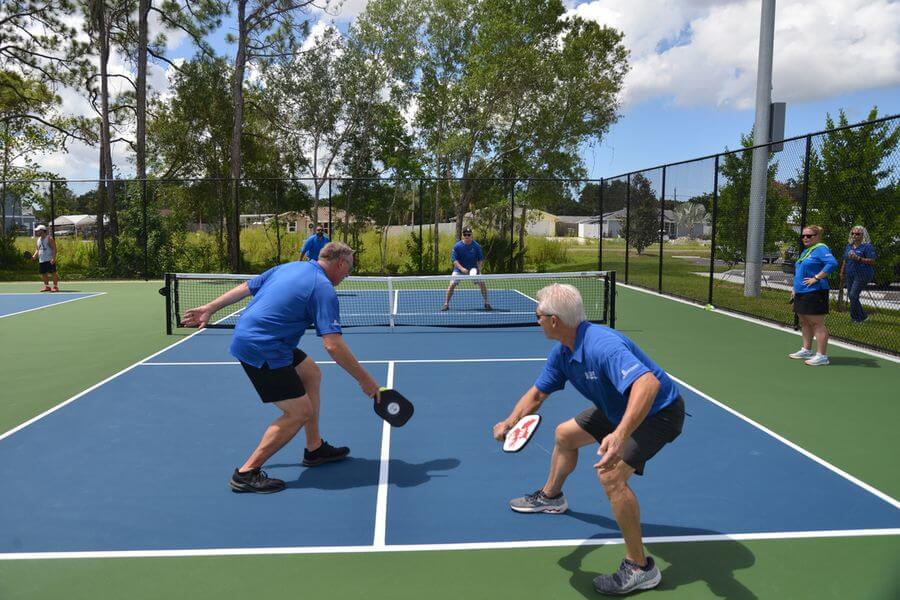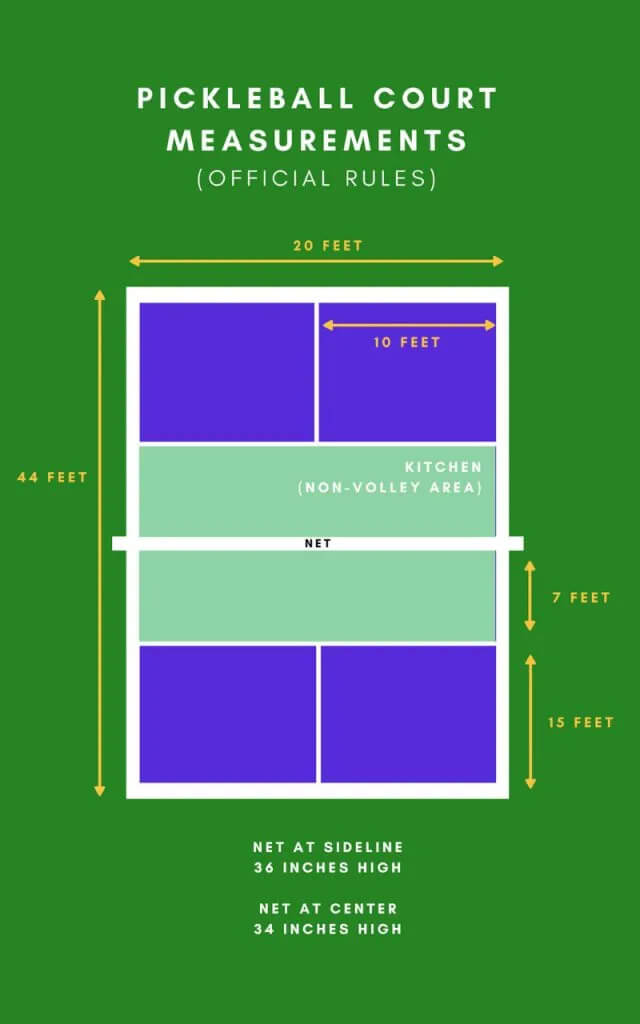Introduction: How to Play Singles Pickleball Successfully
Understanding how to play singles pickleball is essential for players seeking a more challenging and physically demanding variation of America’s fastest-growing sport. While doubles pickleball dominates recreational play, singles pickleball offers unique strategic opportunities and intense one-on-one competition that can dramatically improve your overall game.
Learning how to play singles pickleball requires mastering different rules, scoring systems, and court coverage techniques compared to doubles play. This comprehensive guide covers everything from basic rules to advanced strategies used by professional players.
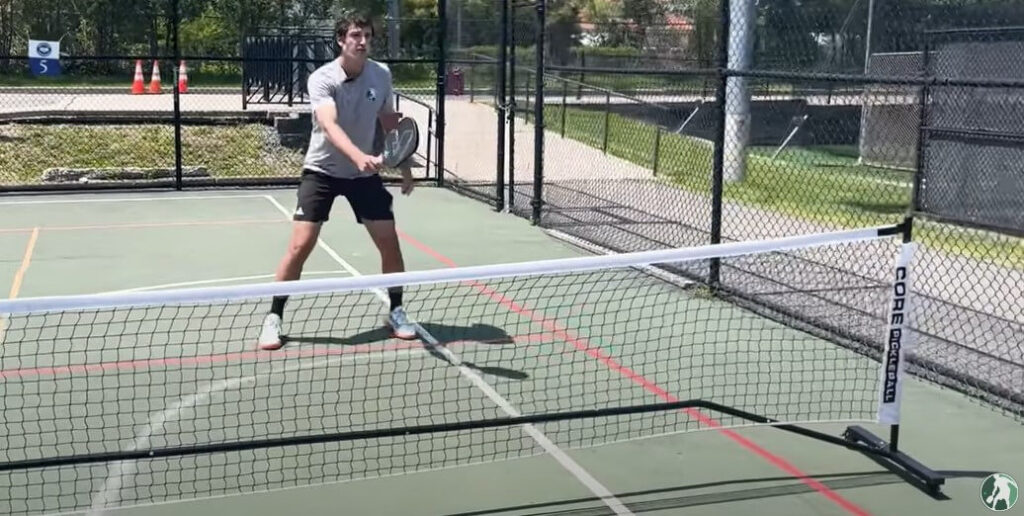
Official Rules: How to Play Singles Pickleball
Court Dimensions and Setup
When learning how to play singles pickleball, it’s important to understand that the court dimensions remain identical to doubles play. The standard pickleball court measures 20 feet wide by 44 feet long, with each side measuring 20 feet wide by 22 feet long from baseline to net. The non-volley zone (kitchen) extends 7 feet from the net on both sides.
Unlike tennis, there are no separate lines for singles play – players use the entire width of the court. This creates significant court coverage challenges that define singles strategy.
Serving Rules in Singles Play
The serving rules represent key differences in how to play singles pickleball compared to doubles. The first serve always begins from the right-hand side of the court. The server’s score determines serving position: serve from the right side when your score is even (0, 2, 4, 6, 8, 10), and from the left side when your score is odd (1, 3, 5, 7, 9).
Essential Serving Requirements:
- Underhand serve with upward arc motion
- Paddle contact below waist level
- Serve diagonally crosscourt to opposite service area
- Must clear the non-volley zone and land in service court
- Only one serve attempt per point
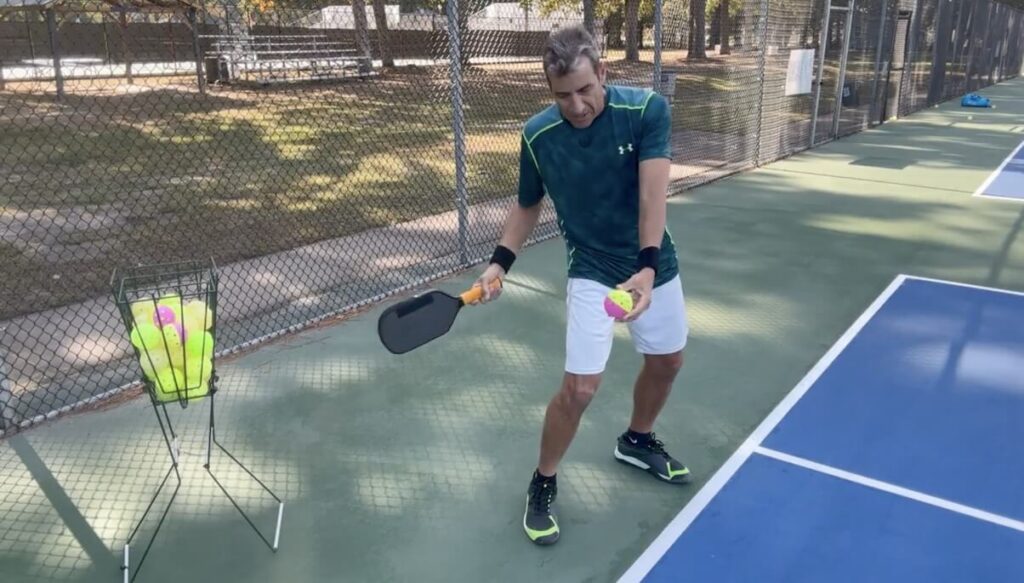
Scoring System: How to Play Singles Pickleball
Simplified Two-Number Scoring
One advantage when learning how to play singles pickleball is the simplified scoring system. Unlike doubles, which uses three numbers, singles scoring only uses two: server’s score followed by receiver’s score (example: “5-3”).
Games are played to 11 points, win by 2, identical to doubles format. Tournament games may extend to 15 or 21 points. Only the serving player can score points – if the receiver wins a rally, they gain the serve but don’t score.
Serving Sequence and Side Changes
Understanding serve rotation is crucial for how to play singles pickleball. The server continues serving until they commit a fault, switching sides after each point scored. When a fault occurs, service passes to the opponent (called a “side-out”). The new server begins from the side determined by their current score.
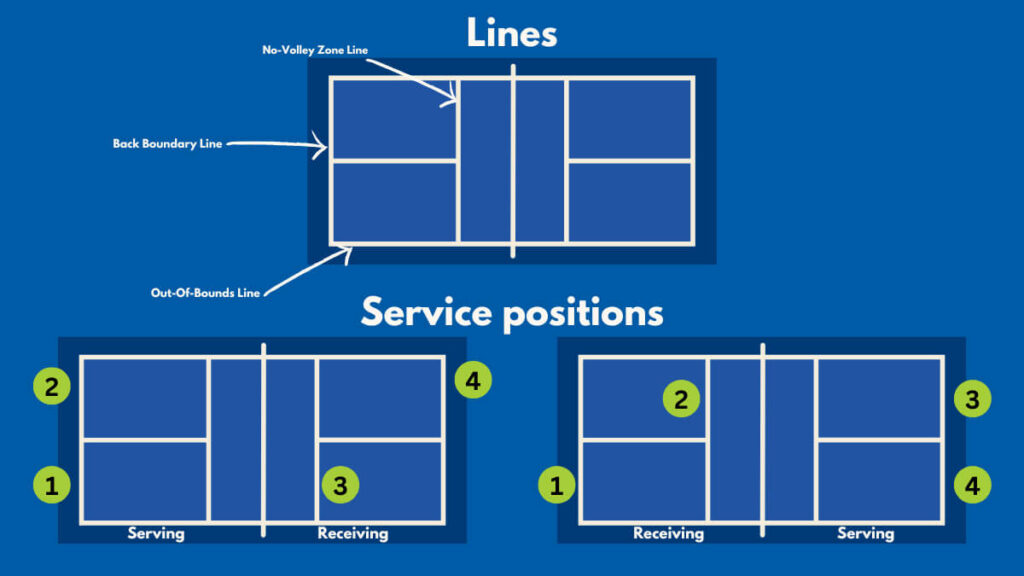
Essential Rules: How to Play Singles Pickleball
The Two-Bounce Rule
The two-bounce rule applies identically in singles and doubles play. After the serve, the receiving player must let the ball bounce before returning it. The serving player must then let the return bounce before hitting their next shot. After these two bounces, both players may hit the ball in the air (volley) or off the bounce.
Non-Volley Zone Regulations
Kitchen rules remain unchanged when learning how to play singles pickleball. Players cannot volley while standing in or touching the non-volley zone. This 7-foot area on each side of the net creates strategic challenges, especially in singles where court coverage is more demanding.
Fault Conditions in Singles Play
Common faults that result in loss of serve include:
- Serving into the net or outside service court boundaries
- Stepping on or over baseline during serve
- Volleying from within non-volley zone
- Ball touching player or paddle twice
- Ball bouncing twice on same side before being hit
Strategic Fundamentals: How to Play Singles Pickleball
Court Positioning and Movement
Mastering court positioning is essential when learning how to play singles pickleball. Unlike doubles, you must cover the entire court alone, requiring strategic positioning and efficient movement patterns.
Optimal Positioning Strategy:
- Generally stay in the back third of the court
- Position yourself near the centerline for better court coverage
- Face your opponent to react quickly to either side
- Move laterally as your opponent moves, maintaining center court position
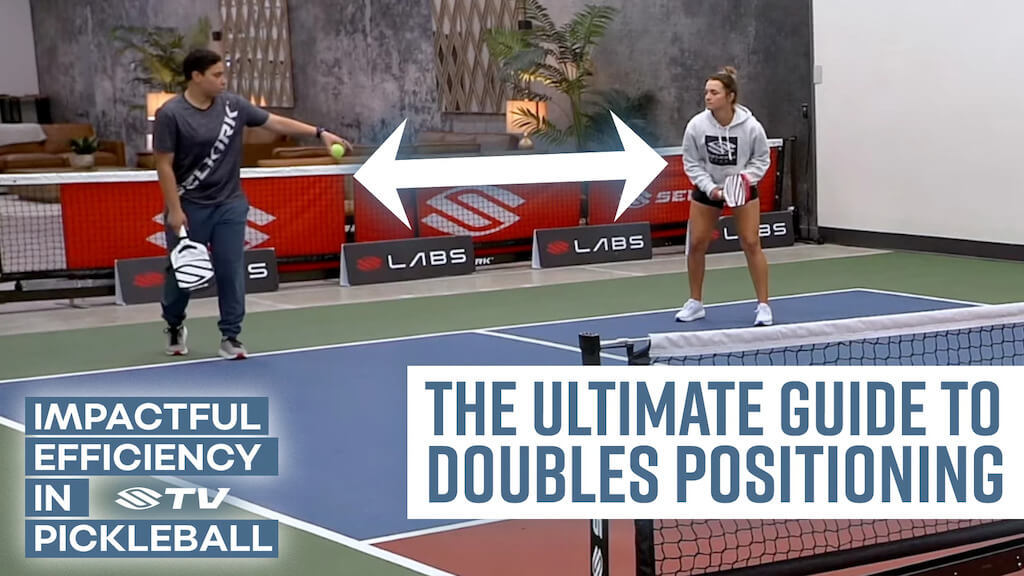
Serving Strategy for Singles Success
Effective serving strategy differentiates successful singles players. According to USA Pickleball guidelines, servers should keep serves deep with good pace while varying direction. Serving from near the centerline provides better positioning for returns.
Professional Serving Tips:
- Target opponent’s backhand (typically weaker side)
- Serve deep to push opponent behind baseline
- Vary serve placement to prevent predictability
- Use pace and spin to create difficult returns
Return Strategy and Court Control
Learning how to play singles pickleball effectively requires mastering the return of serve. Deep returns keep opponents away from the net, preventing easy third shots. Returns should target the baseline and preferably the opponent’s weaker side.
Effective Return Techniques:
- Hit deep toward opponent’s baseline
- Add slice to create floating returns
- Force opponent to move laterally
- Prepare to advance forward after return
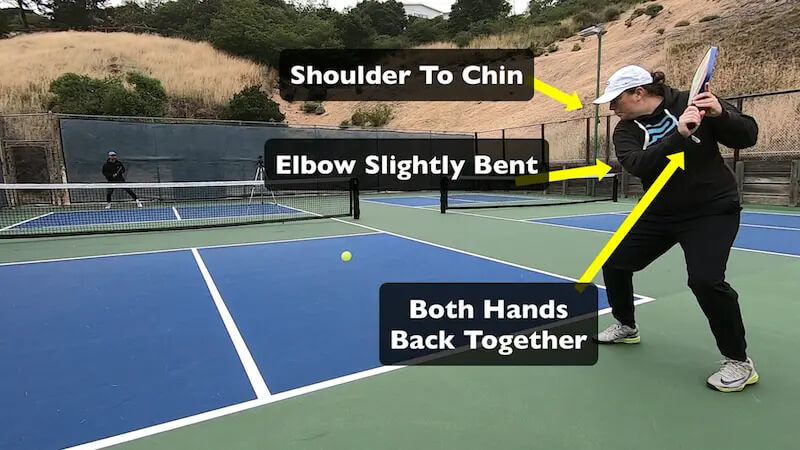
Advanced Strategies: How to Play Singles Pickleball
Offensive Tactics
Aggressive play often determines singles outcomes. Unlike doubles’ emphasis on patience and dinking, how to play singles pickleball successfully often requires more power and court movement.
Key Offensive Strategies:
- Hit forcing shots to corners when opponent is deep
- Attack weak returns with passing shots
- Use speed and power to pressure opponent
- Target opponent’s backhand consistently
Defensive Positioning and Shot Selection
When opponents gain offensive advantage, defensive positioning becomes critical. Stay near the back third of the court and focus on neutralizing aggressive shots with deep, consistent returns.
Defensive Techniques:
- Use lobs when opponent reaches the net
- Hit deep forcing shots to reset point
- Never hit drop shots when opponent is deep
- Maintain center court position for recovery
The Mental Game in Singles
Singles pickleball demands mental toughness and strategic thinking. Players must make decisions independently without partner consultation, requiring confidence and quick decision-making.
Mental Strategy Elements:
- Identify opponent weaknesses early
- Vary shots to prevent predictability
- Stay positive during long rallies
- Maintain aggressive mindset while being smart
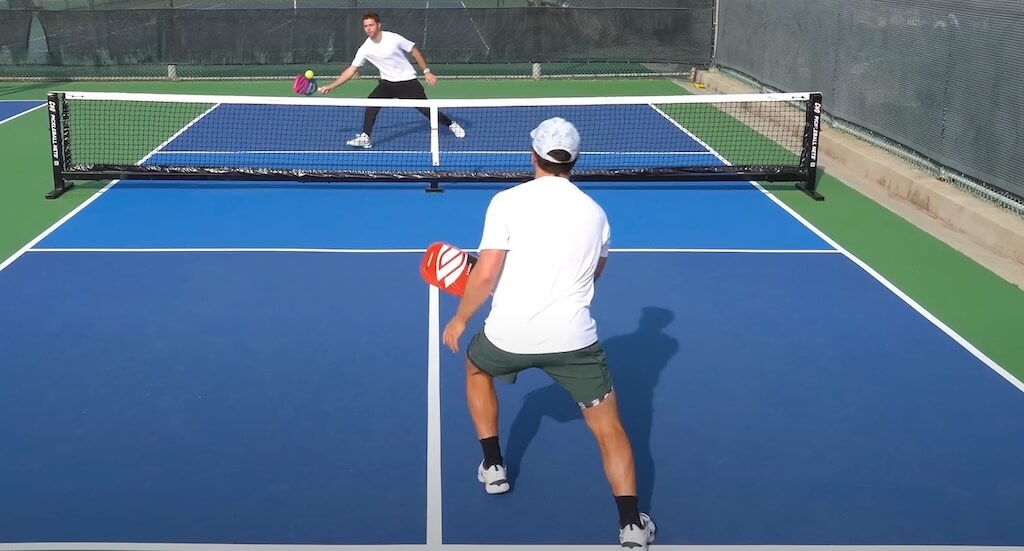
Physical Conditioning for Singles Success
Fitness Requirements
Understanding how to play singles pickleball includes recognizing the significant fitness demands. Singles requires substantially more court coverage, endurance, and lateral movement compared to doubles play.
Essential Fitness Components:
- Cardiovascular endurance for long rallies
- Lateral agility for side-to-side movement
- Quick acceleration and deceleration
- Core strength for balance and power
Training Recommendations
Successful singles players incorporate specific conditioning focused on pickleball demands:
Recommended Exercises:
- Interval running for endurance
- Lateral shuffling drills
- Plyometric exercises for explosiveness
- Core strengthening routines
Common Mistakes When Learning How to Play Singles Pickleball
Strategic Errors
Many players struggle transitioning from doubles to singles because they maintain doubles strategies. How to play singles pickleball effectively requires different tactical approaches.
Common Strategic Mistakes:
- Attempting too many dinking exchanges
- Playing too conservatively
- Poor court positioning
- Inadequate fitness preparation
Technical Faults
Singles players often commit technical errors that prove costly in one-on-one competition:
Frequent Technical Issues:
- Inconsistent serving due to pressure
- Poor shot selection under pressure
- Inadequate court coverage
- Mental fatigue affecting decision-making
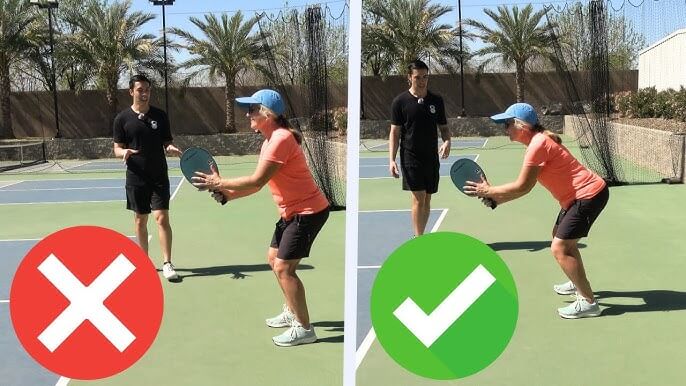
Equipment Considerations for Singles Play
Paddle Selection for Singles
While paddle choice remains personal preference, singles play may benefit from specific paddle characteristics that support the game’s demands.
Recommended Features:
- Balanced weight for extended play
- Good control for placement shots
- Adequate power for aggressive shots
- Comfortable grip for long matches
Footwear and Court Shoes
Proper footwear becomes even more critical in singles due to increased lateral movement and direction changes. Court-specific shoes with lateral support are essential for injury prevention and performance.
Practice Drills for Singles Improvement
Solo Practice Sessions
Developing singles skills requires specific practice routines that simulate match conditions:
Effective Solo Drills:
- Wall practice for consistency
- Serving accuracy drills
- Movement pattern practice
- Conditioning circuits
Partner Practice for Singles
Even singles players benefit from partner practice sessions focusing on singles-specific skills:
Partner Drill Options:
- Cross-court rallies
- Serve and return practice
- Conditioning challenges
- Point play simulation
Understanding how to play singles pickleball opens new competitive opportunities and dramatically improves overall pickleball skills. The physical and mental challenges of singles play develop court awareness, shot selection, and strategic thinking that translate directly to improved doubles performance.
Singles pickleball demands dedication, fitness, and strategic thinking, but rewards players with intense competition and significant skill development. Whether pursuing tournament competition or simply seeking variety in your pickleball experience, mastering how to play singles pickleball enhances your overall understanding and enjoyment of this rapidly growing sport.
The key to singles success lies in consistent practice, strategic thinking, and maintaining the fitness level necessary for effective court coverage. With dedication and proper technique, any player can develop the skills necessary to compete effectively in singles pickleball competition.
